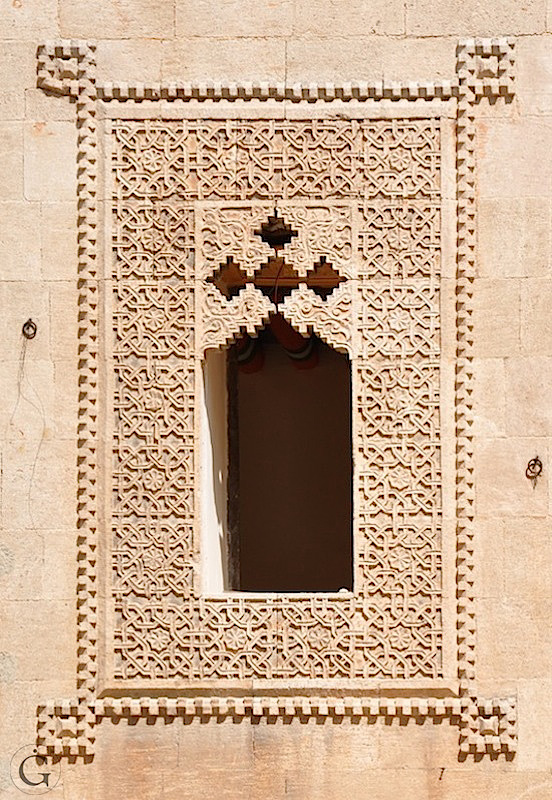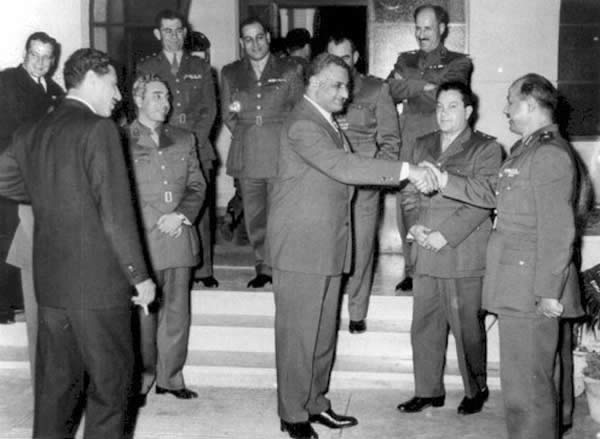|
Club D'Alep
The Club d'Alep is a social club of Aleppo which was founded in 1945 and located in a former residential mansion in the city's Azizieh district. The club has been celebrated internationally for the quality and authenticity of its Syrian cuisine, Aleppine cuisine. History The Club d’Alep () was founded in 1945 and has since served as a principle gathering point for the families of Aleppo's merchant class. The Club is located in a late 1800s mansion built in the local Composite order, composite architectural style. The building was one of earliest structures of the then newly developing Azizieh district of Aleppo. It first served as the residence of the Beit Ghazaleh, Ghazaleh – a prominent Christian Aleppine family. It then became the location for the private club celebrated for the quality and authenticity of its Aleppo#Cuisine, cuisine, Aleppo#Leisure and entertainment, entertainment and nightlife. The Club d'Alep, with its summer and winter branches, had been noted as ha ... [...More Info...] [...Related Items...] OR: [Wikipedia] [Google] [Baidu] |
Aleppo
Aleppo is a city in Syria, which serves as the capital of the Aleppo Governorate, the most populous Governorates of Syria, governorate of Syria. With an estimated population of 2,098,000 residents it is Syria's largest city by urban area, and was the largest by population until it was surpassed by Damascus, the capital of Syria. Aleppo is also the largest city in Syria's Governorates of Syria, northern governorates and one of the List of largest cities in the Levant region by population, largest cities in the Levant region. Aleppo is one of List of cities by time of continuous habitation#West Asia, the oldest continuously inhabited cities in the world; it may have been inhabited since the sixth millennium BC. Excavations at Tell as-Sawda and Tell al-Ansari, just south of the old city of Aleppo, show that the area was occupied by Amorites by the latter part of the third millennium BC. That is also the time at which Aleppo is first mentioned in cuneiform tablets unearthed in Ebl ... [...More Info...] [...Related Items...] OR: [Wikipedia] [Google] [Baidu] |
Syria
Syria, officially the Syrian Arab Republic, is a country in West Asia located in the Eastern Mediterranean and the Levant. It borders the Mediterranean Sea to the west, Turkey to Syria–Turkey border, the north, Iraq to Iraq–Syria border, the east and southeast, Jordan to Jordan–Syria border, the south, and Israel and Lebanon to Lebanon–Syria border, the southwest. It is a republic under Syrian transitional government, a transitional government and comprises Governorates of Syria, 14 governorates. Damascus is the capital and largest city. With a population of 25 million across an area of , it is the List of countries and dependencies by population, 57th-most populous and List of countries and dependencies by area, 87th-largest country. The name "Syria" historically referred to a Syria (region), wider region. The modern state encompasses the sites of several ancient kingdoms and empires, including the Eblan civilization. Damascus was the seat of the Umayyad Caliphate and ... [...More Info...] [...Related Items...] OR: [Wikipedia] [Google] [Baidu] |
Syrian Cuisine
Syrian cuisine is a Mediterranean cuisine, Mediterranean and Middle Eastern cuisine, Middle Eastern cuisine that traces back to ancient civilization in Syria and the region. Syrian specialties makes use of eggplant, zucchini, garlic, meat (mostly from mutton, lamb and sheep), sesame seeds, rice, chickpeas, fava beans, lentils, steak, cabbage, cauliflower, vine leaves, pickled turnips, cucumbers, tomatoes, olive oil, lemon juice, Mentha, mint, pistachios, honey and fruits. Selections of appetizers known as ''meze, mezze'' are customarily served along with pita, Arabic bread before the Syrian meal's main course, which is followed by coffee, with Dessert, sweet confections or fruits at will. Many recipes date from at least the 13th century.Eddé, Anne-Marie. (1999). ''La Principauté ayyoubide d'Alep (579/1183 – 658/1260)''. Foods ''Meze'' Stuffed vine leaves ''Kebab'' ''Kibbe'' A variety of Syrian dishes made from a fried, baked, grilled, cooked, or raw mixture of bul ... [...More Info...] [...Related Items...] OR: [Wikipedia] [Google] [Baidu] |
Composite Order
The Composite order is a mixed order, combining the volutes of the Ionic order capital with the acanthus leaves of the Corinthian order.Henig, Martin (ed.), ''A Handbook of Roman Art'', p. 50, Phaidon, 1983, In many versions the composite order volutes are larger, however, and there is generally some ornament placed centrally between the volutes. The column of the composite order is typically ten diameters high, though as with all the orders these details may be adjusted by the architect for particular buildings. The Composite order is essentially treated as Corinthian except for the capital, with no consistent differences to that above or below the capital. The Composite order is not found in ancient Greek architecture and until the Renaissance was not ranked as a separate order. Instead it was considered as an imperial Roman form of the Corinthian order. Though the Arch of Titus, in the forum in Rome and built in 82 AD, is sometimes cited as the first prominent surviving ... [...More Info...] [...Related Items...] OR: [Wikipedia] [Google] [Baidu] |
Beit Ghazaleh
Beit Ghazaleh (The Ġazaleh House; ) is one of the largest and better-preserved palaces from the Ottoman Empire, Ottoman period in Aleppo. It was named after the Ghazaleh family that owned it for about two centuries. Since 1914, it was used as a public school and restored to host the Memory Museum of the city of Aleppo. Beit Ghazaleh is located in the Al-Jdayde district of Aleppo. The structure has been damaged by warfare and earthquakes. History: the origins of the Ġazaleh House in Aleppo The house is located on the Western edge of a large suburb inhabited by a multi-religious and multi-ethnic population. This neighbourhood to the North of the old city of Aleppo developed since the late Mameluke period. This area became the Christian quarter of Al-Jdayde, Jdeideh which was organically clustered around its churches. Here lived the notables of Aleppo's Christian communities, notably the Armenians in Syria, Armenians who specialised in trade with India and Persia. The Ġa ... [...More Info...] [...Related Items...] OR: [Wikipedia] [Google] [Baidu] |
Al-Jdayde
Al-Jdayde ( "The New Town", also transcribed as ''al-Jdeideh'', ''al-Judayda'', ''al-Jdeïdé,'' ''al-Jadida'' or ''al-Jdeydeh'') is a historic predominantly Christian neighbourhood of Aleppo. Noted for its winding narrow alleys, richly decorated mansions and churches—it is an area of significant cultural and historical interest. Much of Al-Jdayde suffered catastrophic damage during the Syrian Civil War. History At the end of the Mamluk period, al-Jdayde was a small suburb benefiting from a few shops located outside of city's northern walls and near the cemeteries and storage areas. The development of the city along the roads connecting the Bab al-Nasr gate with neighbouring villages to the North and northeast progressively integrated Jdayde into the city of Aleppo. By the late 14th century, these quarters were equipped with '' khutba'' mosques and fountains made possible by a network of water works. A new water duct, opened in 1490–91, facilitated the further extensi ... [...More Info...] [...Related Items...] OR: [Wikipedia] [Google] [Baidu] |
United Arab Republic
The United Arab Republic (UAR; ) was a sovereign state in the Middle East from 1958 to 1971. It was initially a short-lived political union between Republic of Egypt (1953–1958), Egypt (including Occupation of the Gaza Strip by the United Arab Republic, Egyptian-governed Gaza) and Second Syrian Republic, Syria from 1958 until Syria seceded from the union following the 1961 Syrian coup d'état. Egypt continued to be known officially as the United Arab Republic until it was formally dissolved by Anwar Sadat in September 1971. The republic was led by Gamal Abdel Nasser as the President of Egypt, Egyptian president. The UAR was a member of the United Arab States, a loose confederation with the Kingdom of Yemen, Mutawakkilite Kingdom of Yemen, which was dissolved in 1961. It was a brief pan-Arab union. History Origins The United Arab Republic was established on 1 February 1958 as the first step towards a larger Pan-Arabism, pan-Arab state, originally being proposed to Egyptian ... [...More Info...] [...Related Items...] OR: [Wikipedia] [Google] [Baidu] |
Architectural Conservation
Conservation and restoration of immovable cultural property describes the process through which the material, historical, and design integrity of any immovable cultural property are prolonged through carefully planned interventions. The individual engaged in this pursuit is known as an architectural conservator-restorer. Decisions of when and how to engage in an intervention are critical to the ultimate conservation-restoration of cultural heritage. Ultimately, the decision is value based: a combination of artistic, contextual, and informational values is normally considered. In some cases, a decision to not intervene may be the most appropriate choice. Definitions Narrow definition The Conservation Architect must consider factors that deal with issues of prolonging the life and preserving the integrity of architectural character, such as form and style, and/or its constituent materials, such as stone, brick, glass, metal, and wood. In this sense, the term refers to the "prof ... [...More Info...] [...Related Items...] OR: [Wikipedia] [Google] [Baidu] |
Tourist Attractions In Syria
Tourism is travel for pleasure, and the commercial activity of providing and supporting such travel. UN Tourism defines tourism more generally, in terms which go "beyond the common perception of tourism as being limited to holiday activity only", as people "travelling to and staying in places outside their usual environment for not more than one consecutive year for leisure and not less than 24 hours, business and other purposes". Tourism can be domestic (within the traveller's own country) or international. International tourism has both incoming and outgoing implications on a country's balance of payments. Between the second half of 2008 and the end of 2009, tourism numbers declined due to a severe economic slowdown (see Great Recession) and the outbreak of the 2009 H1N1 influenza virus. These numbers, however, recovered until the COVID-19 pandemic put an abrupt end to the growth. The United Nations World Tourism Organization has estimated that global international tourist a ... [...More Info...] [...Related Items...] OR: [Wikipedia] [Google] [Baidu] |
Buildings And Structures In Aleppo
A building or edifice is an enclosed structure with a roof, walls and windows, usually standing permanently in one place, such as a house or factory. Buildings come in a variety of sizes, shapes, and functions, and have been adapted throughout history for numerous factors, from building materials available, to weather conditions, land prices, ground conditions, specific uses, prestige, and aesthetic reasons. To better understand the concept, see ''Nonbuilding structure'' for contrast. Buildings serve several societal needs – occupancy, primarily as shelter from weather, security, living space, privacy, to store belongings, and to comfortably live and work. A building as a shelter represents a physical separation of the human habitat (a place of comfort and safety) from the ''outside'' (a place that may be harsh and harmful at times). buildings have been objects or canvasses of much artistic expression. In recent years, interest in sustainable planning and building practi ... [...More Info...] [...Related Items...] OR: [Wikipedia] [Google] [Baidu] |






